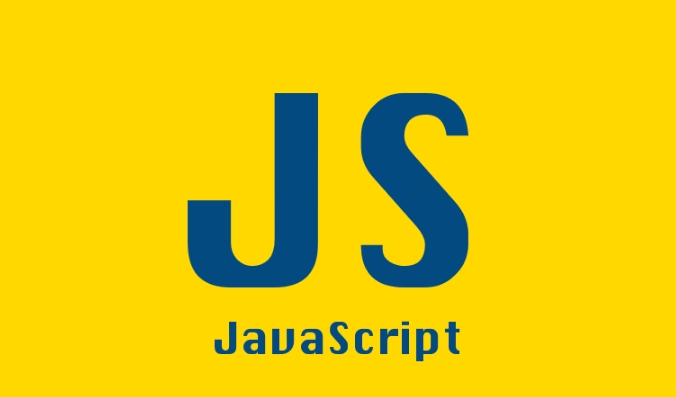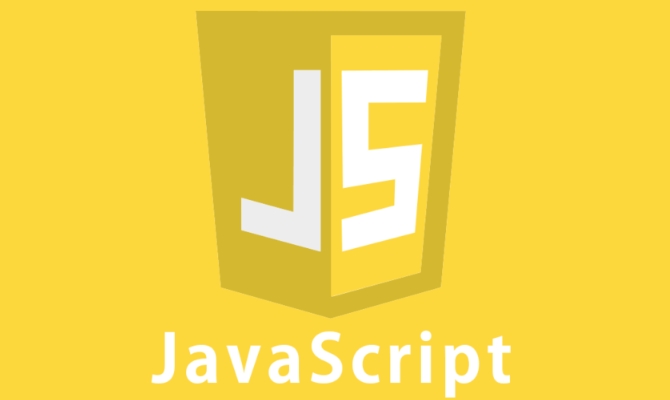Optimizing DOM Manipulation for High Performance
Jul 24, 2025 am 03:31 AMTo improve dynamic web page performance, DOM operations must be optimized to reduce re-arrangement and redrawing. 1. Avoid direct operation of DOM in loops, and batch insertion should be used with DocumentFragment; 2. Cache DOM query results, give priority to using efficient selectors such as getElementById, and limit the query scope; 3. Use event delegation to bind event listening to the parent element to reduce memory consumption; 4. Separate read and write operations to avoid layout jitter caused by forced synchronous layout; 5. Animation prioritizes CSS transform and opacity, using GPU acceleration without triggering re-arrangement; 6. Block processing when a large number of DOM updates, release the main thread through setTimeout or requestIdleCallback to maintain the interface response. By minimizing DOM interaction and following the browser rendering mechanism, application performance can be significantly improved and smooth user experience can be ensured.

When building dynamic web applications, DOM manipulation is often a bottleneck for performance. Even small inefficiencies can lead to jank, slow rendering, and poor user experience—especially on lower-end devices. Optimizing how and when you interact with the DOM is essential for high-performance applications. Here's how to do it right.

Minimize Direct DOM Manipulation
Every time you access or modify the DOM, the browser may need to reccalculate styles and reflow the layout. Frequent or unecessary operations compound this cost.
Instead of updating the DOM in a loop:

// Bad: Triggers reflect multiple times
for (let i = 0; i < items.length; i ) {
const el = document.createElement('li');
el.textContent = items[i];
list.appendChild(el); // Reflow on each append
}Batch your changes:
// Good: One reflow at the end
const fragment = document.createDocumentFragment();
for (let i = 0; i < items.length; i ) {
const el = document.createElement('li');
el.textContent = items[i];
fragment.appendChild(el);
}
list.appendChild(fragment); // Single reflow Use DocumentFragment to build content off-DOM, then insert it once.

Use Efficient DOM Querying
Avoid querying the same elements repeatedly. Cache references when possible.
// Bad: Repeated querying
function updateItems() {
document.getElementById('list').style.color = 'blue';
document.getElementById('list').textContent = 'Updated';
}
// Good: Cache the element
const listEl = document.getElementById('list');
function updateItems() {
listEl.style.color = 'blue';
listEl.textContent = 'Updated';
} Prefer querySelector only when necessary. For simple selections (eg, ID, class, tag), built-in methods like getElementById , getElementsByClassName , or getElementsByTagName are faster and return live or static collections more efficiently.
Also, narrow your scope:
// Better: Limit search within a known container const container = document.getElementById('container'); const buttons = container.querySelectorAll('.btn');
Leverage Event Delegation
Instead of attaching event listeners to many individual elements, attach a single listener to a parent and use event bubbleing.
// Bad: Many listeners
document.querySelectorAll('.item').forEach(item => {
item.addEventListener('click', handleItemClick);
});
// Good: One listener
list.addEventListener('click', (e) => {
if (e.target.classList.contains('item')) {
handleItemClick(e);
}
});This reduces memory usage and improves performance, especially with dynamic or large lists.
Avoid Forced Synchronous Layouts (Layout Thrashing)
Reading layout properties (like offsetHeight , getBoundingClientRect() ) forces the browser to sync the render tree. If followed by a write, it can trigger unecessary reflows.
// Bad: Forces reflow on every iteration
for (let i = 0; i < items.length; i ) {
const height = items[i].offsetHeight; // Read
items[i].style.transform = `translateY(${height}px)`; // Write
}Instead, separate reads and writes :
// Good: Batch reads first, then writes
const heights = [];
for (let i = 0; i < items.length; i ) {
heights.push(items[i].offsetHeight); // Read all first
}
for (let i = 0; i < items.length; i ) {
items[i].style.transform = `translateY(${heights[i]}px)`; // Then write
}This prevents the browser from reccalculating layout repeatedly.
Use CSS Transforms and Opacity for Animations
For animations, avoid changing layout-triggering properties like top , left , or width . These cause reflow and repaint.
Instead, use transform and opacity , which the browser can handle on the compositor thread (often GPU-accelerated):
/* Preferred for performance */
.animated {
transition: transform 0.3s, opacity 0.3s;
}
.animated.slide {
transform: translateX(100px);
}This results in smooth animations with minimal main-thread work.
Update DOM in Chunks for Large Changes
When dealing with thousands of elements, avoid blocking the main thread. Use requestIdleCallback or setTimeout to yield control and keep the UI responsive.
function updateLargeList(items, callback) {
const chunkSize = 100;
let index = 0;
function processChunk() {
const endIndex = Math.min(index chunkSize, items.length);
for (; index < endIndex; index ) {
const el = document.createElement('li');
el.textContent = items[index];
list.appendChild(el);
}
if (index < items.length) {
// Yield to main thread
setTimeout(processChunk, 0);
} else {
callback();
}
}
processChunk();
}This keeps the interface usable during heavy updates.
Optimizing DOM manipulation isn't about doing less—it's about doing it smarter. By batching updates, minimizing reflows, using efficient selectors, and leveraging browser internals, you can dramatically improve performance. The key is to work with the browser, not against it.
Basically: touch the DOM as little as possible, and make those touches count .
The above is the detailed content of Optimizing DOM Manipulation for High Performance. For more information, please follow other related articles on the PHP Chinese website!

Hot AI Tools

Undress AI Tool
Undress images for free

Undresser.AI Undress
AI-powered app for creating realistic nude photos

AI Clothes Remover
Online AI tool for removing clothes from photos.

Clothoff.io
AI clothes remover

Video Face Swap
Swap faces in any video effortlessly with our completely free AI face swap tool!

Hot Article

Hot Tools

Notepad++7.3.1
Easy-to-use and free code editor

SublimeText3 Chinese version
Chinese version, very easy to use

Zend Studio 13.0.1
Powerful PHP integrated development environment

Dreamweaver CS6
Visual web development tools

SublimeText3 Mac version
God-level code editing software (SublimeText3)
 Nginx Performance Tuning: Optimizing for Speed and Low Latency
Apr 05, 2025 am 12:08 AM
Nginx Performance Tuning: Optimizing for Speed and Low Latency
Apr 05, 2025 am 12:08 AM
Nginx performance tuning can be achieved by adjusting the number of worker processes, connection pool size, enabling Gzip compression and HTTP/2 protocols, and using cache and load balancing. 1. Adjust the number of worker processes and connection pool size: worker_processesauto; events{worker_connections1024;}. 2. Enable Gzip compression and HTTP/2 protocol: http{gzipon;server{listen443sslhttp2;}}. 3. Use cache optimization: http{proxy_cache_path/path/to/cachelevels=1:2k
 Apache Performance Tuning: Optimizing Speed & Efficiency
Apr 04, 2025 am 12:11 AM
Apache Performance Tuning: Optimizing Speed & Efficiency
Apr 04, 2025 am 12:11 AM
Methods to improve Apache performance include: 1. Adjust KeepAlive settings, 2. Optimize multi-process/thread parameters, 3. Use mod_deflate for compression, 4. Implement cache and load balancing, 5. Optimize logging. Through these strategies, the response speed and concurrent processing capabilities of Apache servers can be significantly improved.
 Performance optimization in Java microservice architecture
Jun 04, 2024 pm 12:43 PM
Performance optimization in Java microservice architecture
Jun 04, 2024 pm 12:43 PM
Performance optimization for Java microservices architecture includes the following techniques: Use JVM tuning tools to identify and adjust performance bottlenecks. Optimize the garbage collector and select and configure a GC strategy that matches your application's needs. Use a caching service such as Memcached or Redis to improve response times and reduce database load. Employ asynchronous programming to improve concurrency and responsiveness. Split microservices, breaking large monolithic applications into smaller services to improve scalability and performance.
 PHP framework performance optimization: Exploration combined with cloud native architecture
Jun 04, 2024 pm 04:11 PM
PHP framework performance optimization: Exploration combined with cloud native architecture
Jun 04, 2024 pm 04:11 PM
PHP Framework Performance Optimization: Embracing Cloud-Native Architecture In today’s fast-paced digital world, application performance is crucial. For applications built using PHP frameworks, optimizing performance to provide a seamless user experience is crucial. This article will explore strategies to optimize PHP framework performance by combining cloud-native architecture. Advantages of Cloud Native Architecture Cloud native architecture provides some advantages that can significantly improve the performance of PHP framework applications: Scalability: Cloud native applications can be easily scaled to meet changing load requirements, ensuring that peak periods do not occur bottleneck. Elasticity: The inherent elasticity of cloud services allows applications to recover quickly from failures and maintain availability and responsiveness. Agility: Cloud-native architecture supports continuous integration and continuous delivery
 How to consider performance optimization in C++ class design?
Jun 05, 2024 pm 12:28 PM
How to consider performance optimization in C++ class design?
Jun 05, 2024 pm 12:28 PM
Tips for improving performance in C++ class design include: avoiding unnecessary copies, optimizing data layout, and using constexpr. Practical case: Use object pool to optimize object creation and destruction.
 Scaling XML/RSS Processing: Performance Optimization Techniques
Apr 27, 2025 am 12:28 AM
Scaling XML/RSS Processing: Performance Optimization Techniques
Apr 27, 2025 am 12:28 AM
When processing XML and RSS data, you can optimize performance through the following steps: 1) Use efficient parsers such as lxml to improve parsing speed; 2) Use SAX parsers to reduce memory usage; 3) Use XPath expressions to improve data extraction efficiency; 4) implement multi-process parallel processing to improve processing speed.
 Analysis of common problems in PHP performance optimization
Jun 05, 2024 pm 05:10 PM
Analysis of common problems in PHP performance optimization
Jun 05, 2024 pm 05:10 PM
Improve PHP performance by enabling OPCache to cache compiled code. Use a caching framework such as Memcached to store frequently used data. Reduce database queries (e.g. by caching query results). Optimize code (e.g. use inline functions). Utilize performance analysis tools such as XHProf to identify performance bottlenecks.
 Yii 2.0 Deep Dive: Performance Tuning & Optimization
Apr 10, 2025 am 09:43 AM
Yii 2.0 Deep Dive: Performance Tuning & Optimization
Apr 10, 2025 am 09:43 AM
Strategies to improve Yii2.0 application performance include: 1. Database query optimization, using QueryBuilder and ActiveRecord to select specific fields and limit result sets; 2. Caching strategy, rational use of data, query and page cache; 3. Code-level optimization, reducing object creation and using efficient algorithms. Through these methods, the performance of Yii2.0 applications can be significantly improved.






